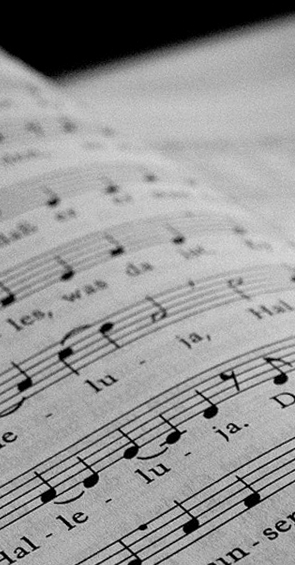
2011 Nfl Cba Agreement
July 5, 2011: Laboratory discussions are moved to New York. The legal and finance teams will meet Tuesday and Wednesday at the offices of Proskauer Rose, an sports law giant of which NFL field consultant Bob Batterman is a partner. Owners and players will resume in-person negotiations on July 7 and 8. Flexibility of the 2011 salary cap: Although the salary cap has been reduced, teams have been offered two options to facilitate the retention of high-priced Veterans this year. Teams can „borrow“ $3 million against future salary caps to pay veterans. You can also use an additional $3.5 million in compensation otherwise based on Veterans‚ performance. May 16, 2011: The U.S. Court of Appeals granted the NFL‚s application for a permanent suspension and upheld the lockout until at least the May 3, 2011 hearing. June in effect when the NFL‚s appeal against Judge Nelson‚s decision will be heard.
The two sides agreed on a new „all income“ model. It‚s a bit complicated, but overall, players must earn on average at least 47% of all revenue for the 10-year term of the deal. March 12, 2011: The NFL lockout officially begins, triggering the longest work stoppage in the league‚s history. Salary cap plus benefits of $142.4 million per club in 2011 ($120.375 million for salary and bonus) and at least that amount in 2012 and 2013. Starting in 2012, the salary cap will be set based on a combined share of „total revenues,“ a new model differentiated by revenue streams without cost reduction. Players receive 55% of national media revenue, 45% of NFL Ventures revenue, and 40% of local club revenue. As of 2012, the annual „True Up“ reflects increases or decreases in sales compared to forecasts. Clubs receive a credit for the actual investment in the stadium and up to 1.5% of revenue per year. The players‚ share must be at least 47% on average during the 10-year term of the agreement.
League-wide commitment to spend 99% of the cap in 2011 and 2012. For the 2013-2016 seasons and again for the 2017-2020 seasons, the clubs jointly commit to spending at least 95% of the cap. Each association committed to cash expenditures of 89% of the upper limit of 2013-2016 and 2017-2020. » Increase in minimum wages by 10% in year 1 with continuous increases each year of the agreement. June 21, 2011: After frequent meetings between the two parties, the 32 owners meet with Commissioner Roger Goodell to discuss details of the CBA‚s latest proposal. There will be no vote on the deal, which sources say gives players 48 percent of the league‚s revenue, without the summit‚s more than $1 billion credit. As I finish this article, players still have to vote on ABC‚s proposal as they had planned. The claim that the owners are building a PR forum and that they have included in the agreement some things that did not exist before. NFL clubs on Thursday approved the terms of a full settlement of the dispute and a new 10-year collective agreement with the NFL Players‚ Association. As the Elliot, Brady and Peterson cases have shown, the NFL collective bargaining agreement is an extremely important document for the sport of football.
Any NFL fan can gain a deeper understanding of the league and its drama off the field by first understanding the collective bargaining agreement itself. The 2011 National Football League player lockout was a work stoppage imposed by the owners of all 32 NFL teams and lasted from March 12, 2011 to July 25, 2011. When NFL owners and players, represented by the National Football League Players‚ Association, were unable to reach consensus on a new collective agreement, the owners locked the players out of the team‚s facilities and shut down the league‚s operations. The main contentious issues were the salary cap, benefits for the safety and health of players, revenue sharing and television contracts, transparency of financial information, rookie salaries, length of season and free agency policies. During the 18-week, 4-day period, there was no free agency and no training camp, and players were not allowed to see team doctors, enter or train team facilities, or communicate with coaches. The end of the lockout coincided with the formation of a new collective agreement before the start of the 2011 regular season. Two years later, the NFLPA and AFLPA merged when the two leagues did. The new NFLPA was the first professional sports union to be recognized by the National Labour Relations Board.
That same year, another brief lockout led to a two-day players‚ strike before owners and players reached a four-year agreement. However, many union representatives have been dismissed by their teams. July 27: The league‚s 2011 year begins at 2:00 p.m. .m, provided the NFLPA has ratified the CBA. The signing period of the free agency begins. Clubs can sign free agents and free agents without restriction from other clubs. Clubs can sign offer sheets. The negotiation period begins. All clubs must be under the salary cap. The first 51 rule applies. However, the last salary cap in 2009 was $128 million per team (2010 was not limited).
Not only is the cap for 2011 expected to be $8 million lower than the 2009 mark at $120 million, but there is also a minimum spending requirement that will require teams to spend at least 89% of their cap. Both results are highly desirable for players. ESPN writer John Clayton notes that there were five main parts of the new ABC: free agency, salary cap, rookie compensation, minimum wages, and franchise labels. First, free agency policies have returned to what they were from 1993 to 2011. This means that a player needs four years of experience to become an unrestricted free agent and three years of experience for a restricted free agency. Second, the salary cap is now $120.375 million, but unlike the previous CBA, the new one doesn‚t initially have a team minimum wage. The team‚s salary floors did not return until the 2013 season, when they reached 89% of the ceiling. [36] For the 2011 season, teams had the opportunity to „borrow“ $3 million in future salary cap space to be used for an engaged player. For years following the 2011 season, teams will have the option to „borrow“ $1.5 million each for up to three players. Thirdly, the remuneration of recruits has been changed. There is a limit to the amount of money given to recruits, with the maximum total in 2011 being $874 million.
First-round picks receive four-year contracts with an option for the fifth year. In the second to seventh cycles, there are fixed four-year contracts. Fourth, the league‚s minimum wage for players has increased by 10 to 12 percent depending on tenure. Fifth, a team‚s ability to give top players a franchise or transition label to retain their rights hasn‚t changed. Other important concerns were the health and safety of players as well as the benefits and pensions of former players. [37] The new 10-year collective agreement runs until 2021 and is valued at between $12 billion and $16 billion per year. [38] [39] On the same day, the NFLPA announced that it was no longer a union. This allowed players to file individual antitrust complaints, many of which questioned the legality of the impending lockout. Tom Brady and Peyton Manning were two of the eight aforementioned plaintiffs in the lawsuit filed in Minnesota District Court. The Federal District Court initially ruled in favor of the players and declared the lockout illegal because the players no longer belonged to a union.
The 8th Circuit Court of Appeals stayed the District Court‚s decision and the lockout continued until a final decision of the Court of Appeals was rendered. In July 2011, as court-ordered mediation between players and owners continued in New York City, the 8th District Court announced that the Norris-La Guardia Act prohibited lockouts. The ABC 2011 did not disappoint in terms of dramaturgy. The negotiation process began in early 2010, but came to a complete halt in early 2011. Having made no progress in the negotiations, the two sides agreed to mediation under the auspices of the Federal Mediation and Conciliation Service (FMCS), which was due to begin in mid-February. During mediation, players and owners agreed to extend the 2006 CBA by one week. The FMCS was unable to negotiate a settlement and the previous CBA expired on March 7, 2011. After the end of the 2010 season, the players and owners had not settled the labour dispute. Although the CBA was scheduled to expire on March 3, players and league owners agreed to extend negotiations by one week and change the expiration date to March 11, 2011. [13] After a one-week extension, negotiations could not lead to a new agreement. On the 11th. At midnight in March, the CBA expired and the owners imposed a lockout.
.


